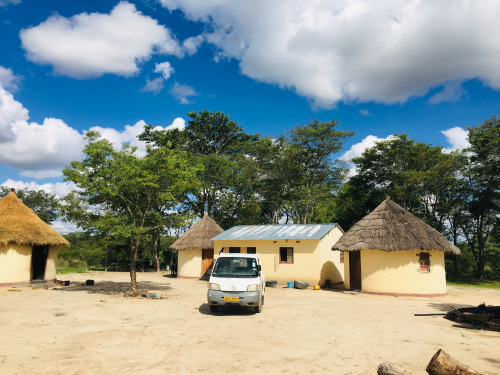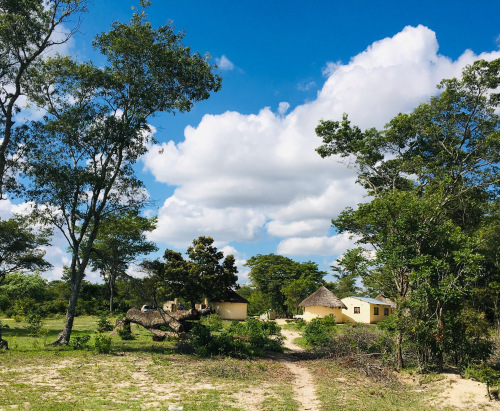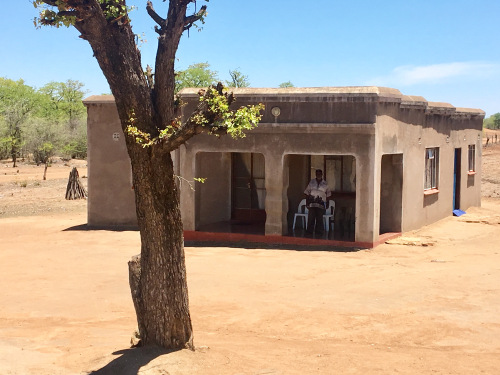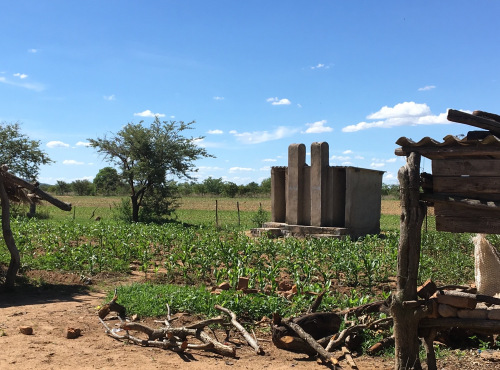Source: 20 years after Zimbabwe’s land reform: what does the future hold? | zimbabweland
This is the final post in this blog series, which asks what have been the changes in land reform areas in Masvingo province since 2000, and what are the possible future trajectories? A more detailed analysis of our data over this twenty year period, including comparing our full census surveys in these sites from 2006-7 and 2011-12, must wait. This concluding blog is therefore a very preliminary reflection on the changes that we have observed over 20 years, and some speculation of what the future might hold for the land reform farmers of Masvingo over the next 20 years.
Demographic shifts
Clearly since we started the study in the early 2000s our sample households are older, with some having passed on. We see a pattern of inheritance, first often to wives and then to children. Many households now have adult children in the 21-30 age bracket, some of whom are working (often abroad) and sending remittances, while others have sought land to farm from their parents. The forms of subdivision vary – sometimes children take over the farm and work jointly with elderly parents; more often they take a subdivided section of the farm; sometimes they are resident at the homestead, but farm or work elsewhere, including in small, often illegal, irrigation plots. Sometimes of course, with the ageing or death of the original settlers, the farm is abandoned.
The turnover of farms across our sites varies (see previous blog), but there has been a considerable churn. We can expect this into the future. While a number left at the beginning, as carving out new land under uncertain conditions was too much for some. The rigours of farming a larger plot than in the communal areas and often without the support networks is certainly difficult. The uncertainty over tenure arrangements in some sites, now partially resolved, was a factor too early on. No-one then quite knew whether the land reform would be permanent.
While some people have left our sites, there are certainly always new arrivals eager to take on plots, even if not through inheritance. Indeed, in all sites the total number of settlers has increased, although as panels our surveys do not capture the new arrivals in new plots. Whether it’s local leaders getting backhanders, churches encouraging new followers to settle or formal allocations by the state, the demand for land is clear. This will undoubtedly continue, particularly as the next generation demands land.
Places of success
The majority who have remained now see their ‘new’ (now not so new at all) land reform farms as their primary residence. They no longer are straddling between communal and resettlement sites as was the case following settlement. They are largely secure in their new farms and see the advantages. Connections with their original communal area ‘homes’ are retained, including around family occasions, notably respect for ancestral spirits and burials, and important networks of support have emerged.
The flows of resources have reversed over time, and today it is the resettlement areas who are providing support to the communal areas. Food is regularly sent to families back home and people from the communal areas come and provide wage labour in the resettlement areas each season. This dynamic has consolidated in the past decade, particularly as the wider economic situation in the country has worsened, and the safety nets (of remittances, government support etc.) that communal area dwellers once relied on have gone.
Overall, the resettlement areas – especially the A1 sites – are therefore seen as places of success, certainly in comparison to the communal areas from where most came. Regular surpluses of grain production – mostly maize – has been complemented by engagement with cash crops, including cotton in the early years until the prices collapsed.
The A2 dryland areas are a different story. While people are happy to take on land as a speculative asset, the business environment for farming investment has remained challenging throughout the 20 years of our study. With some notable exceptions, many A2 farms have failed to take off. The irrigation-based Hippo Valley sugar farmers stand out from this pattern, and have prospered thanks to an obligatory connection to the sugar company that provides inputs and a guaranteed market.
Accumulation and differentiation
In the next 20 years, much will depend on economic and political stability, which doesn’t look like arriving soon, given the current political economy of Zimbabwe. Meanwhile, A1 farmers can continue to prosper based on limited own-investment and dependence on local economies.
The process of ‘accumulation from below’ has been evident from the beginning, but has accelerated, as people have become settled. In 2010 we estimated that around a third of households were able to make regular surpluses from farming and reinvest it, but this has now expanded to perhaps a half, certainly in the higher rainfall areas and in better farming years.
This dynamic is significant for processes of class formation in these areas. While patterns of differentiation were observed a decade ago, these have solidified, with a clear class of petty commodity producer accumulators emerging combined with other diverse ‘classes of labour’ seeking out piece-work wage employment and surviving off diversified incomes alongside more limited agricultural production.
This has gendered implications, as women in more wealthy households have greater opportunities and often take up focused agricultural activities, including gardening, while in poorer households they must undertake a range of more precarious income-earning activities. These patterns of differentiation feed through into opportunities for the next generation too. Richer homes can afford to educate their kids, sometimes in boarding schools, and can afford college and university fees, while others must make a living on the margins.
Changing patterns of investment
For those who are successful farmers, and even those who are aspiring to be, the pattern of investment has changed over the last 20 years. In the early years, most agricultural surplus – together with incomes from other sources and remittances – were invested in housing stock and basic farm infrastructure. The quality of homesteads across Masvingo is impressive, representing a considerable amount of money sunk into these new farms.
Once the farms were functioning and homes established, investment patterns have switched. In recent surveys we have seen the growth of investment in cars (allowing transport from often remote areas), pumps (allowing irrigation), solar panels (providing electricity) and plots in town (part of widening income opportunities), as well as the usual replacement of basic equipment (ploughs, harrows etc.). Livestock assets have fluctuated, but have been a vital source of income over time, but lack of space precludes a massive growth in herd and flock numbers outside the A2 ranch areas.
Into the future, the pattern of inequality observed is likely to persist and will likely deepen. A big question is whether the successful A1 petty commodity producers can accumulate sufficiently to leave agriculture to take up other opportunities. Much will depend on the wider economy, but we already see the emergence of a rural business class, with its base in agriculture, investing in small shops, transport operations and rural businesses, as well as others investing in real estate in urban areas and small towns.
This is likely to continue, and the role of agricultural capital in the wider economy – from housing, to transport to the service sector (restaurants, bars, tailors etc.) – will remain important, and will potentially be crucial in the revival of the economy over the next decades. Meanwhile, the more precarious ‘classes of labour’ will continue to rely on agriculture as a form of security, but a pattern of increased (semi-)proletarianisation is likely as they provide labour for emerging businesses, both farm-based and off-farm.
Agriculture and local economies
In terms of patterns of agricultural production, the last 20 years have seen major changes. While classic field crop maize production remains dominant, the rise of irrigated horticulture has been massively important across our sites. This has been accelerated by the availability of cheap pumps and piping and is especially important for younger people and women. The marketing networks that have emerged – to supermarkets and via traders – have been impressive, resulting in a serious injection of funds into local economies and the development of a set of secondary jobs – as people take up roles as processors, transporters, traders, brokers and others in support of small-scale commercialised production.
Another area of growth is poultry production, particularly broiler units. As with horticulture, this again has benefited from the informalisation of the wider economy and the failure of some of the big producers who once dominated the market. Sales of chickens to local restaurants, including those popping up in local townships funded by agricultural surpluses, are important, as well as sales to schools and urban supermarkets, who are now prepared to source locally.
Of course, these new ‘projects’, as they are known locally, are not available to everyone, given the start-up costs. However, many are able to get such activities going, through a profitable crop sale or a remittance payment from a working child. Indeed, it is often younger members of households who are making the running, as they’ve failed to get jobs in the collapsed Zimbabwe economy or who have tried their luck in South Africa but have felt that alternatives at home are better given poor conditions and xenophobic attacks.
In the future, we can expect more specialisation and entrepreneurship as the standard patterns of farming change, along with land scarcity, demographic change, the wider availability of technological expertise and shifts in market demand. This will be the case in both A1 and A2 areas, where a greater diversity of income earning activity is already seen compared to the early phases of land reform. With the economic linkage effects observed, even in the straitened economic circumstances of contemporary Zimbabwe, the opportunities for fostering local economic growth are certainly present, and are already being realised.
State failure
As many point out, such opportunities are severely constrained by the lack of basic infrastructure. The state has simply not provided over 20 years, while donors have emphasised humanitarian support and have avoided so-called ‘contested areas’ through sanctions of varying types. There have of course been some attempts to improve public infrastructure in all our sites, and clinics and schools for example have been built which were not there 20 years back. But basic support for road building and maintenance, irrigation infrastructure and agricultural and veterinary extension support has been very limited.
In all sites, right from the outset, people have largely had to go it alone. They have supplied the labour and bricks for building schools and clinics, they have hired graders to improve roads and they have developed their own private systems for providing transport in often remote settings. The frontier spirit of land invasion and the sense of solidarity that this inspired have allowed this to happen, alongside strong leadership from those who led the settlers from the ‘base camps’ to the ‘Committees of Seven’. Yet, the failure of state support is sorely felt, and with sanctions there has been no donor investment, bar a few stray NGO projects.
Future prospects will be highly dependent on the re-engagement of the state – with support from donors – in the land reform areas. The agenda for what needs to be done is clear, and has been laid out on this blog many times before. The constraints do not lie in lack of formalised tenure as many assume (this did not come up as an issue, even in our so-called informal sites), but more in effective financing, infrastructure investment and support for the growth of local economies, fostering already-existing linkage effects. For there is much going on, and the last 20 years have shown a commitment and determination of farmers across our sites that is truly impressive. Solutions must work from these beginnings, and stimulate and expand the many existing successes, while addressing the multiple challenges faced.
The future?
When we asked our informants across our sites about what they thought about the future over the next 20 years, the replies were equivocal. It all depends, most said. It depends on the climate and reliable rainfall. It depends on the availability of markets, and stable prices and currency. And above all it depends on wider macro-economic and political stability.
The roller-coaster of Zimbabwe’s situation over the past 20 years has meant that many farmers across our sites have produced, accumulated and invested against all odds. While many retain an allegiance to the ruling party and are thankful for the commitment to land reform, everyone is scathing about government incompetence, rampant corruption and the failure of basic provisioning by the state.
Over the next 20 years, much will depend on issues of politics and governance in these land reform areas, potentially with new political allegiances emerging. However, this wider political-economic story is something that is largely out of the hands of farmers who will continue to struggle in difficult circumstances until things change.
This post was written by Ian Scoones and first appeared on Zimbabweland. Led by Felix Murimbarimba, the Masvingo team is: Moses Mutoko, Thandiwe Shoko, Tanaka Murimbarimba, Liberty Tavagwisa, Tongai Murimbarimba, Vimbai Museva, Jacob Mahenehene, Tafadzwa Mavedzenge (data entry) and Shingirai, the driver. Thanks to the research team, ministry of agriculture officials and the many farmers who have supported the work over the years.




COMMENTS
Any dreams of a rosy agriculture under Zanu PF is a horror movie.
Congratulations to Zanu and Scoones on building the best agriculture in the world. Zimbabwe now exports for to the world and the Bond Notes are sent to The UK support the families in the Diapsora. Zimbabwe is a global success thanks to Scoones and Zanu. They are world legends.
Ian Scoones and James Wilson have the whole situation covered and really need to now run the FAO and the World Bank having done such a great job with agriculture in Zimbabwe.
Ndebele, perhaps we should nominate them for the Nobel Peace Prize in Economics. Magicians, they are. Able to report gains when there are only losses… like pulling rabbits from their hat. No doubt the world economic leaders will come in droves to be taught this magic. But then, there’s no magic in making $US disappear into personal off-shore accounts… that’s their real forte.
Seriously, I’ll confess my sin… I want to be there to witness those guys, Mugabe, Mnangagwa, Ncube, Scoones, et al, when they fall on their knees begging the Master for mercy, but knowing they gave none in their wasted, worthless lives.